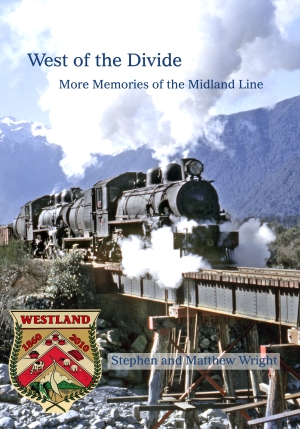
West of the Divide: More Memories of the Midland Line
This book is out of stock and is unlikely to be reprinted.
Through the rugged Southern Alps, the Midland Line stretches from Greymouth on the West Coast to Rolleston on the Canterbury Plains. West of the Divide, the second instalment of the Memories of the Midland Line series, looks at the western section of the railway - primarily from Greymouth to Otira - a line that holds a special place in the hearts of many Coasters.
Profusely illustrated, West of the Divide shares the stories of eight individuals whose lives were impacted by the Midland Line. In addition, the early development of the western portion of the railway is explored, and a separate section is devoted to the West Coast stations and other points of interest along the line. Within these sections, a number of people give their recollections of the railway that was so indispensable to the West Coast communities it served.

